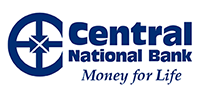
While offering quality products and services to our customers is important, it is also important to us that you have a full understanding of what you are getting with each product or service! When it comes to auto insurance, many people don’t know what they’re paying for. We know insurance is required by law in many states, but what is it that we are paying for? We’ll break down the basics to help you understand what your policy entails.
Liability Coverage
Liability insurance could best be explained as the necessities of an insurance policy. It is designed to protect you in claims where a person is injured, or damage has been caused to one’s personal property. Liability coverage will also help cover hospital bills or other medical related treatment and the rehabilitation resulting from the accident. Property damage is not limited to another vehicle. It also covers damage to fences, lamp posts and other related items.
Since insurance is required by law in most states, including all the states we cover, at a minimum, liability is required to help protect you and others in the case of an accident. Each state may have its own limitations for maximum payment amounts, but it is generally required.
When combined, these next two coverages combined are what many refer to as ‘Full Coverage.’ If you have bought a car and are still paying it off, the institution the loan is with (also referred to as the lienholder) will likely require you to have ‘full coverage’ on the vehicle. Once you have paid the vehicle off, you will have the option to switch to liability if you desire to do so.
Collision Coverage
When you are in an accident, collision coverage is what helps pay for your vehicle to be repaired. All you would pay is the deductible, once the deductible is met, insurance will do the rest. In most cases, there is a limit on how much insurance will cover. If the damages to your car are close to or higher than the car’s perceived value, the car will be deemed totaled by your insurance company. If that happens, you will receive compensation based on your car’s current value.
Comprehensive Coverage
Comprehensive coverage is there for you when your car is stolen, damaged from vandalism, hitting an animal or a natural disaster. It works the same way collision coverage works. You pay the deductible and insurance will take care of the rest.
We’ve mentioned deductibles several times so we better cover those as well. A deductible is the amount you pay before an insurance company will pay on a claim. So if you’re in an accident, you are expected to pay a certain amount of the damages, but it is likely you won’t be paying the full amount. When you get your policy, you will decide the deductible amount. Something you will want to keep in mind is that the higher the deductible is the lower your monthly payment will be.
There are add-ons for your policy that you need to consider as well. Things such as roadside service, rental car coverage, which is the insurance company paying for you to get a rental whenever your car is being repaired after an accident. Another optional add-on is uninsured motorist coverage, which covers you if you’re in an accident with an uninsured motorist. All of these can be explained further by your agent. So if you’re interested in learning more about your auto insurance coverage, visit with your agent today!
Update: Central National Bank no longer offers Insurance services from an in-house agency, but you still have access to an agent in many of our locations. We’d be happy to refer you to an agent who can provide assistance. Call your local branch and ask, today!
